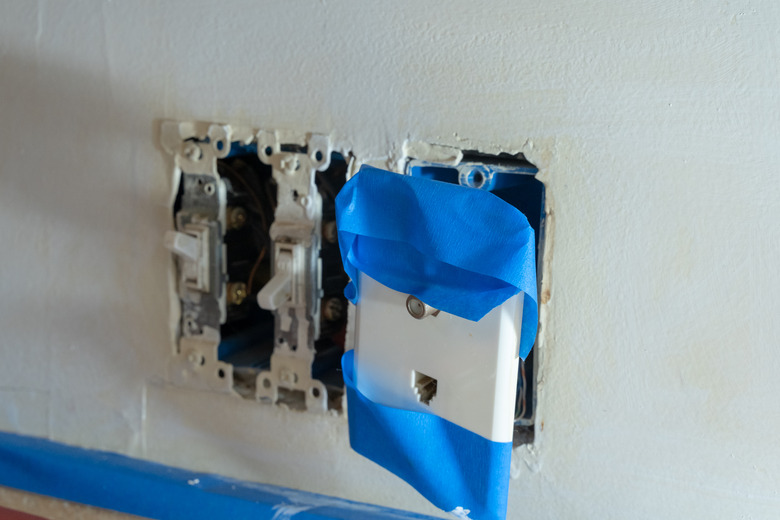How To Fix A Phone Jack
There's a common misconception that telephone wiring is difficult to operate, but because the electricity is low-voltage, it's safe to work on (when the wiring is dry). Phone jacks are incredibly durable pieces of equipment that can take years of abuse and still work perfectly fine. Unless you forgot to pay your phone bill, the odds are that your phone jack may have finally developed a problem. Do not worry, because fixing a phone jack is usually one of the easiest self-repair jobs in the house.
Basics of Phone Jacks and Wiring
Basics of Phone Jacks and Wiring
Before jumping in to fix your phone jack, it's important to know the basics, and lucky for you, it's pretty easy to understand. Telephone wires operate on one or more pairs of twisted copper wires. The most common type of copper wire is the four strand, two twisted pair. These type of jacks have red and green wires (which are one pair) and yellow and black wires (which are the other pair). The four strand wire carries two separate phone lines and by twisting them together, the wires won't interfere with each other. This is perfect because if you're on the phone, that means your call must be something important you couldn't say over text.
1. Check the Phone Cord
The first thing you should do is check the cord on your phone (if it has one) and make sure that the plug connects to the handset as well as the base. If that is all good and you still have no dial tone, then check the other phones in your home to see if they are also dead. If you have another phone that is working, try plugging the phone that is not working into that jack to make sure that the phone doesn't break. If it gets a dial tone, then you know the phone is OK. If all the phones are without dial tones, then there is a bigger issue.
2. Check the Wires
Back at the phone jack that is not working, remove the cord from the phone jack and look inside the terminal. Check the wires that make contact with the phone cord and see if any look bent out of shape or damaged. If a wire looks bent or out of position, use needlenose pliers to try and bend it back into position. Plug the phone back in and check for the dial tone.
3. Remove the Phone Jack's Cover Plate
On the back side of the plate, you should see where the phone wires connect to the terminal screws. There are usually four different colors of wires – red, green, black and yellow. Check each of the screw terminals and make sure that they are all tight and that the wires remain secure under them.
4. Check Each Individual Wire
Since phone wire is extremely thin, it can sometimes break off at the screw. Check each wire to make sure they're working. If you find one that is, loosen its screw and remove the broken piece of wire. Then, use the smallest notch on the strippers to remove a new section of insulation from the wire. Wrap the exposed wire around the terminal screw and tighten. Be careful not to over-tighten or the new wire may snap too!
5. Check for a Dial Tone
Make sure each screw terminal has the appropriate colored wire connected to it. Before you close everything back up, plug your phone into the jack and check for a dial tone. If you do, close everything back up. If there is still no dial tone, then the problem may be where that phone line branches off from the main line.
6. Test the Demarcation Point
To troubleshoot, you will have to find where the mainline branches out inside your home. The demarcation jack is on the part of the line outside your home. You can use this jack to test the phone line. The demarcation point is located in the junction box outside of your house that contains electric wires and cables. Once you find it, check all of the wiring, terminals and connectors to make sure nothing is loose or broken. If everything looks good, and you still have no dial tone, there may be a break in the line somewhere. You can opt to re-run a new line yourself or have a professional do the job for you.
